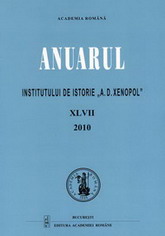Locuri ale memoriei în disputele diplomatice. Domeniul regal de la Balcic în negocierile româno-bulgare din vara anului 1940
Sites of Memory in Diplomatic Disputes. The Royal Domain from Balcic in Romanian-Bulgarian Negotiations in the Summer of 1940
Author(s): Florin AnghelSubject(s): History
Published by: Editura Academiei Române
Keywords: Queen Maria; Royal domain; national memory’s places; Cadrilater; Summer 1940
Summary/Abstract: The overwhelming personality of Queen Maria, with the whole emotional and financial investment in the construction, development and promotion of the symbolic history of the Royal domain in Balchik, together with the infusion of interest – especially artistic, touristic and of the high society –from the most refined elite that Romanian society possessed have slowly but surely made possible that the little town on the Black Sea’s shore, absolutely unknown until the middle of the ’20s, got access to the highest steps in the hierarchy of the national memory’s places. Queen Maria exploited, in a political manner included, the afferent mythology of her property/the place designed to suggest her power over her subjects, and insisted, in her will and testament, that her heart – after her death – should be placed in the minuscule orthodox chapel of the domain. Undoubtedly, being a first-class politician, Maria took into account, and not lastly, the profound obligation that she would have reserved to the future Romania, in the effort to maintain the Cadrilater, or most of it, in the relentless territorial dispute with Bulgaria, triggered with even more vigor after the signing of the Peace Treaty of 1913. The heart itself and Maria’s political will power have constituted the beginning of a fairly bitter argumentation of the politicians and of the public opinion at the thought of ceding the town on the seashore, when it had become obvious that none of the Cadrilater could be saved any more. So as to strengthen the opposition, symbolic religious rituals were carried out in Balchik, meant to outline as visible as possible the importance of this territory to the mythology of national history. Furthermore, the presence of the Queen’s heart in Stella Maris little church was to be the supreme weapon of political and diplomatic debates (with Germany, Italy and Bulgaria) in favour of keeping the town, in any form, regardless of how bizarre or inconstant it would have been. The idea, immediately diffused in the media, was obstinately promoted from part of diplomats in Summer 1940, both in negociations with Bulgarians but with Germany and Italy, too.
Journal: Anuarul Institutului de Istorie »A.D. Xenopol« - Iaşi
- Issue Year: XLVII/2010
- Issue No: 47
- Page Range: 239-252
- Page Count: 13
- Language: Romanian

